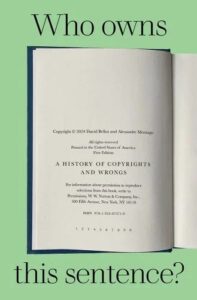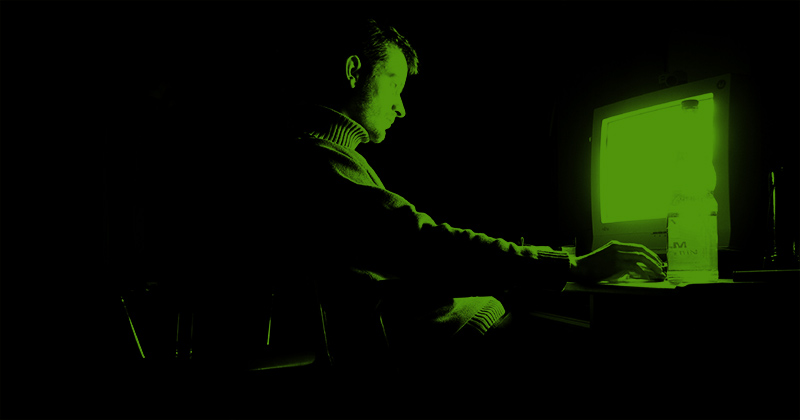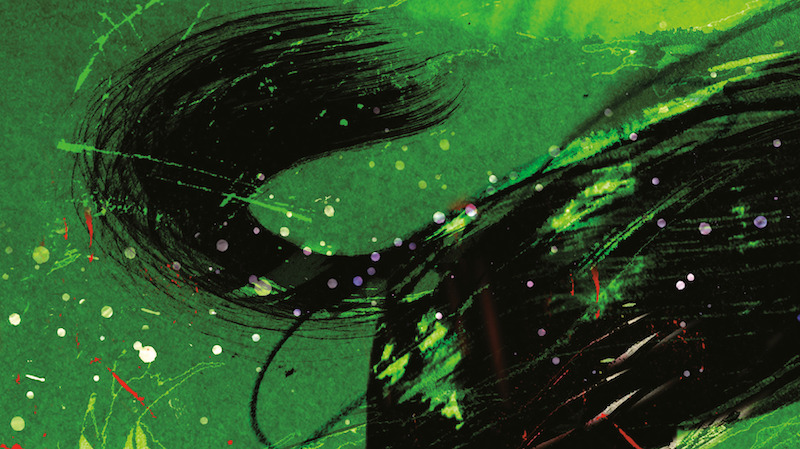How Corporations Tried—And Failed—To Control the Spread of Content Online
David Bellos and Alexandre Montagu on the Evolution of Copyright Law in the Internet Age
The more recent history of copyright in music cannot be separated from the rise and rapid obsolescence of technologies for the recording and transmission not just of sound but of text and pictures, too. Each of these evanescent devices sparked panic among stakeholders, whose partly successful resistance to change explains much of the tangle we are now in—and the high valuation of Bruce Springsteen’s life work.
The first tech alarm to sound out loud was prompted by the introduction of video-cassette recorders, which made it possible for individuals to record protected material broadcast on television without paying an additional license fee. The film industry sought to stamp out such “piracy” by targeting the manufacturers of the V.C.R.s, whose presumptive liability was founded on the novel and unusual tort of “contributory copyright infringement.”
The case was appealed to the Supreme Court, which decided in the end that Sony’s Betamax recorders were legitimate devices, since they could be used for non-infringing purposes as well as for “piracy.” So, having failed to block sales of the technology, the film industry took a different path. Studios started manufacturing videocassettes themselves, and made them available through commercial lending libraries (very much akin to the Circulating Libraries of nineteenth-century England), and later by subscription to a mail-order lending service. As in many other circumstances described in this book, the wider dissemination of copyright material almost certainly made more money for the content owners than narrower regulation would have done.
The greatest perceived threat to financial stakeholders in the culture industry in the later years of the twentieth century came from Tim Berner-Lee’s invention of the Internet.However, rented videocassettes could themselves be copied by ordinary folk with a double-deck V.C.R. and a stock of blank tapes. The Motion Picture Association of America mounted a vigorous and noisy campaign to make the duplication of a licensed cassette, or the duplication of self-recorded cassettes taken from a broadcast, a criminal offense. The campaign succeeded: it resulted in the Warning from the FBI that used to figure as the first frame of movies that could be bought or rented in cassette or D.V.D. format until those media themselves disappeared.
However, the greatest perceived threat to financial stakeholders in the culture industry in the later years of the twentieth century came from Tim Berner-Lee’s invention of the World Wide Web. Initially designed as a tool to allow scientists to share their work, it quickly became a means for distributing perfect copies of text, and then sound and image files, at a marginal cost that was, for the first time, zero to the copier, if not to the planet.
Publishers feared their entire business would be destroyed, and music companies were in an even greater panic. Peer-to-peer technologies were devised to enable perfect reproductions of music recordings to be made and shared widely—thus rendering C.D.s obsolete overnight. The music industry tried to pursue the companies that hosted these services or facilitated the Internet connections that allowed them to function. In an effort to insulate themselves from this type of liability, the Internet service providers (I.S.P.s) successfully lobbied Congress for a “safe harbor,” which eventually came in 1998, under the Digital Millennium Copyright Act, or D.M.C.A.
The concept of a “safe harbor” protection for I.S.P.s was not entirely new. It had first arisen in an entirely different context: pornography. In its early days, the Internet enabled purveyors of salacious material to circumvent restraints on sending obscene publications by mail, and it soon turned into what many saw as a global sewer for unacceptably explicit sexual material.
France’s homegrown answer to the Internet, the text-only terminal called Minitel, was likewise used for escort services and erotic chat-lines, constituting a whole new industry called le minitel rose. Sex makes news, and news makes politics. So the first response to the “Internet threat” was aimed at sanitizing its contents.
The Communications Decency Act of 1996, the brainchild of Senator James Exon, sought to remove “filth” from the Internet through various mechanisms of control that were close to moral censorship. However, another senator, Ron Wyden, saw that Exon’s stringent proposals risked stifling a whole new adventure in its cradle. He succeeded in adding to it a special provision to protect Internet service providers from legal liability for material that their users post on the web.
The wording he had inserted under Section §230 states that “No provider or user of an interactive computer service shall be treated as the publisher or speaker of any information provided by another information content provider,” thus paving the way for the “safe harbor” provisions of the Digital Millennium Copyright Act, which now apply to all kinds of online sites, including social media.
Most of the Communications Decency Act was eventually overruled because it conflicted with Americans’ right to free speech, but the part that remains in force is the provision that has allowed not just filth but misinformation, conspiracy and sedition to thrive, creating a situation similar to the one that obtained in England after the expiry of the Licensing Act in 1695.
From the earliest days of the printed book until the passing of the C.D.A., those who make public a written or visual work answer for it. Printers, then publishers, and after the Statute of Anne, authors too, by being held to be the rightful owners of intangible property, were ipso facto responsible for it being in conformity with the law. That remains the case for all forms of publication, from books to newspapers to T.V. broadcasts—but §230 of the C.D.A. and subsequently §512(c) of the 1998 D.M.C.A. make a special exception for the owners of the platforms that distribute material through the Internet.
It is true, as we have all discovered, that it is difficult and costly to police the dissemination of material new and old throughout the vast connected realm of electronic communication. However, the way in which this realm has been managed has nothing to do with the rights of creators or the interests of the broad public. The Communications Decency Act deems the distribution of material electronically to be an activity outside the constraints that have balanced the twin concepts of “owning” and “answering” for the last five centuries.
The great majority of successful social media platforms are legally domiciled in the United States, in large part because the “safe harbor” legislation gives Internet corporations an almost free rein to do what they like.
However, the C.D.A. did not directly address the “Internet panic” among publishers and entertainment companies. If anything, it made it even harder for them to suppress what they saw as wholesale piracy online, since it exempted the owners of the channels—the Internet service providers—from general liability for the material posted. At their behest, a new law was quickly drafted and passed in 1998 to limit the damage to their revenue streams: the Digital Millennium Copyright Act.
The D.M.C.A. granted entertainment providers one of the things they wanted—criminalization of attempts to circumvent the antipiracy controls in C.D.s; and it extended and refined the “safe harbor” provision for Internet service prov-iders first introduced in the Communications Decency Act of 1996 through a new mechanism called “Notice and Take-Down” that enabled content owners to rid the web of material over which they held rights.
Under this provision, which remains in force, platforms have to take down infringing material if they receive a notice from a content owner of its presence on their sites. Obviously, you have to justify the claim that you are the owner of the rights in the movie, clip, song, artwork or text in question—and you have to keep nothing short of a twenty-four-hour watch on the whole vast Internet to know when to issue a notice and request a take-down.
So unless you are a large corporation with a team of net-scourers or a web-crawling device that has been taught to identify content you own, it is a hit-and-miss affair that leaves most individual creators without significant recourse. Yet it remains the only limitation on the ability of web services to allow users to post whatever they like, with or without permission from rights-holders.
What is missing from these steps to pander to the interests of major industrial concerns (entertainment companies and Internet service providers) is consideration of the more general public interest. Two hundred years after Donaldson’s victory in the House of Lords, which put the public interest ahead of the wishes of London printers, the D.M.C.A. seems to have restored a modern version of the control of the old Stationers’ Company over access to cultural goods.
Corporations that mock copyright in regular business practice nonetheless use those laws with great vigor when it offers them a chance of securing greater rents.Major entertainment companies possessed the resources to use Notice and Take-Down to stop the redistribution of popular songs, since they owned most of them and had legal teams at their disposal to register their claims to ownership. Music copyrights, because they are concentrated in a few large hands, thus thwarted the wishes of many young computer users to share their favorite hits with their friends by posting them on community websites.
Soon enough, ingenious programmers found ways of circumventing this block by devising peer-to-peer file sharing systems that did not involve the storing of any material on a platform. The content corporations quickly banded together to sue the owners of Napster, the first of these schemes, then its successors, with names such as Kazaa, Grokster and Madster—and they won, in court cases dating from 2001 t0 2005.
The devices were banned for engaging in “contributory infringement,” and they disappeared. As with the panic over V.C.R. recorders twenty years earlier, the content industries’ first reaction to this new technology was to claim to be protecting new creations in line with the aims of the laws of 1790 by stamping out new methods that threatened the profitability of what they owned.
The D.M.C.A. also introduced an unprecedented provision to criminalize a different threat to the entertainment industry’s control of compact discs, which can carry music as well as movies on discs even cheaper to produce and easier to carry than cassettes or tape. Manufacturers had already inserted special control codes to disable attempts to duplicate the disks, and also restricted the regions of the world in which they could be played.
An ingenious teenager worked out how to disable the disabling device so he could play foreign movies on his T.V. set, and so the D.M.C.A. stamped on such clever evasions. Jon Lech Johansen, the part-inventor of the by-pass program known as DeCSS, was acquitted after several trials in Norway, but in the U.S. injunctions against his device were obtained. This was the first time that copyright law was successfully amended to criminalize not the infringement, but the method of infringement.
A more sophisticated file-sharing service that allowed users to post video works of their own creation as well as clips of protected works prompted another knee-jerk attempt to quash new developments on the web. In 2007, Viacom, the owner of Comedy Central, M.T.V., Nickelodeon, and Paramount, sued YouTube and its owner Google for no less than a billion dollars for facilitating infringements of its rights.
If the courts had applied the standards set in 2005, when the last of the Napster lookalikes was destroyed, it would have put an end to YouTube too—but that is not what happened. Because YouTube observed the Notice and Take-Down provisions of the Digital Millennium Copyright Act of 1998, the court found that it had been acting within the law. Viacom appealed this decision, and the Court of Appeals held that YouTube’s liability should be decided by a jury in a full trial.
Shortly before the trial was due to begin, the two giants reached a settlement behind closed doors. No judicial resolution was reached, and none has been reached since, on whether what YouTube does is legal or not. It seems amazing that a service now used by millions every day persists in legal limbo. Which makes it no surprise that most people now have no idea when they are infringing copyright and when not.
The terms of the Viacom v. Google settlement have never been publicly revealed, though it was stated that “no money changed hands.” However, the ensuing practice of YouTube makes the nature of the deal transparent. Google now pays owners of copyrighted material uploaded to YouTube a share of the revenue from the advertisements that precede or interrupt the clip.
To get your share, of course, you have to notify YouTube of your ownership of the copyright and go through a laborious registration process. This arrangement satisfies the major “content owners” who can afford to employ people and algorithms to keep a twenty-four-hour watch on what material is being posted. And it satisfies Google, which sacrifices only a fraction of the attention it monetizes by selling advertising space.
As a result, watching clips on YouTube is not as free as it seems. You pay for the pleasure with the small slice of your mind that is occupied by advertisements for life insurance, perfume, or hedge-trimmers.
In the fifteenth century Venice protected the honor of “ingenious and clever minds.” Today, ingenious and clever minds have found a way of taking no notice of copyright law. It has been made redundant on one of the most popular and profitable applications on the World Wide Web.
__________________________________

From Who Owns This Sentence?: A History of Copyrights and Wrongs by David Bellos and Alexandre Montagu. Copyright © 2024. Available from W.W. Norton & Company.




















